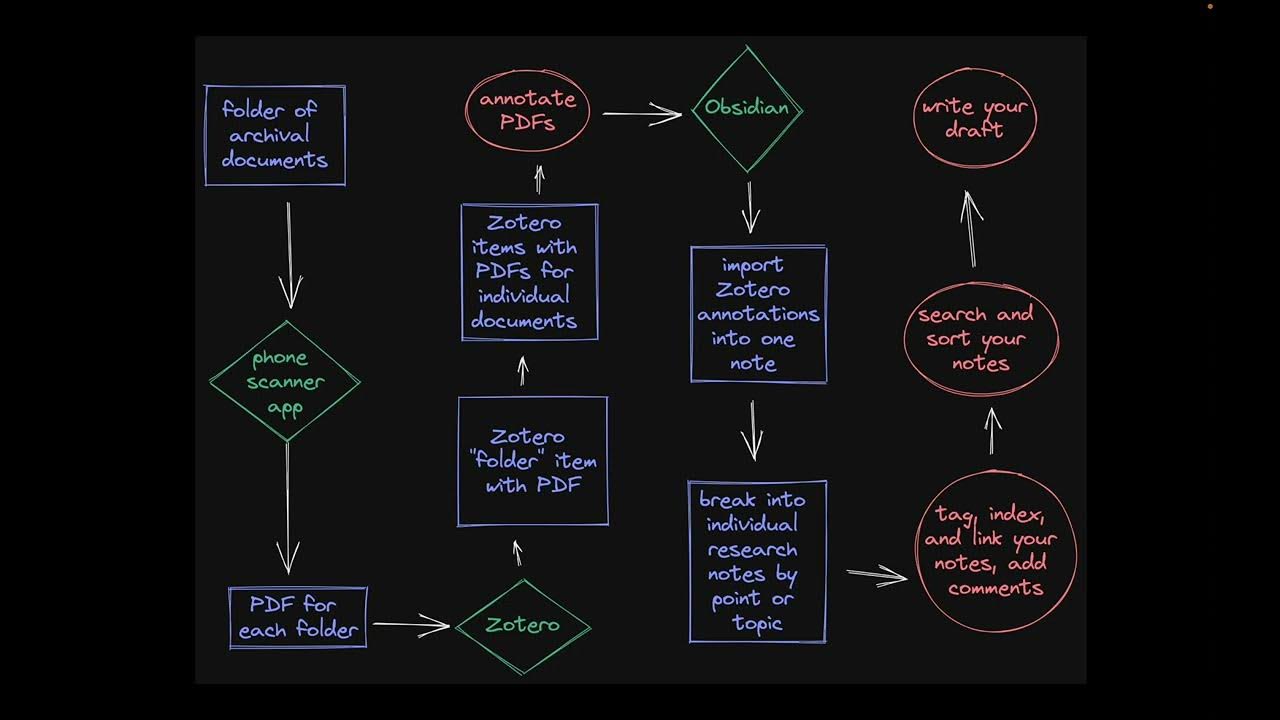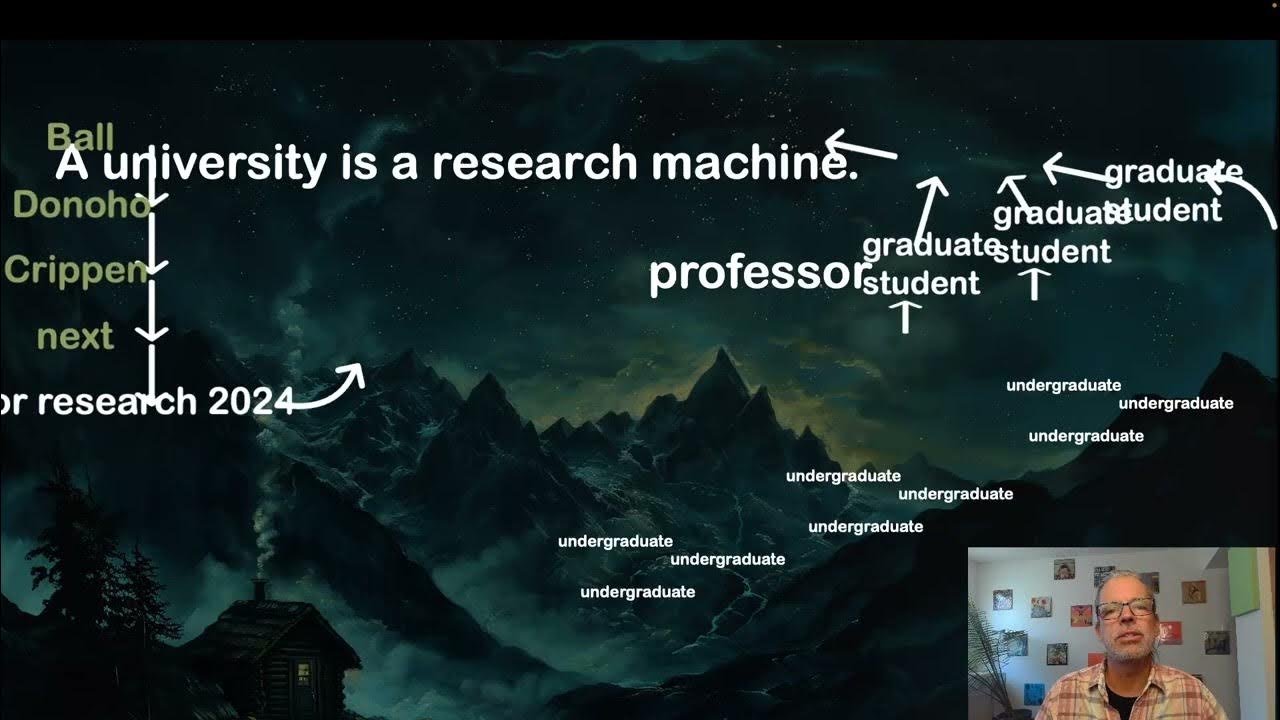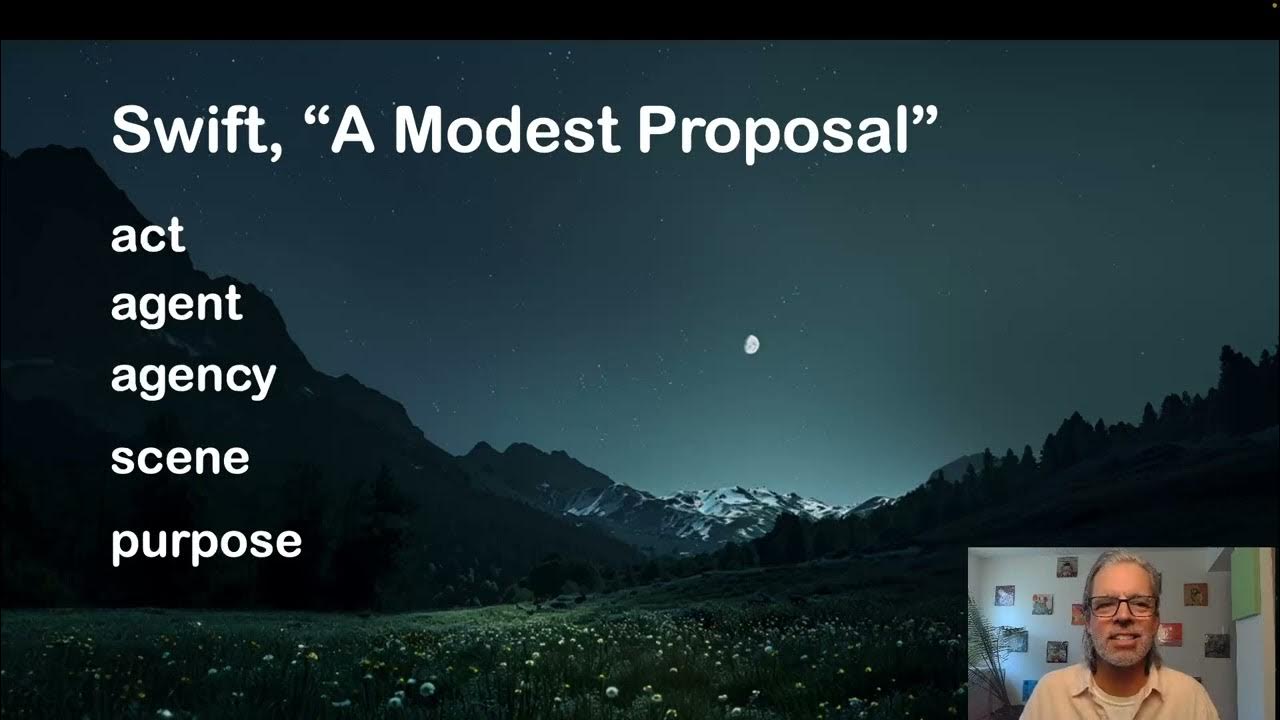How to Write a Literature Review in 30 Minutes or Less
Summary
TLDR本视频教程承诺教您如何在30分钟内草拟文献综述的初稿。首先,解释了文献综述的定义及其重要性,反驳了文献综述在现实世界中无用的观点。举例说明,如何通过文献综述解决实际工作中的问题,比如在人力资源管理领域内,如何决定是否实施文化多样性培训项目。视频详细介绍了完成文献综述的五个简单步骤:分离引文和摘要段落、重组段落、合并摘要、添加主题句和过渡句,以及撰写引言和结论。此外,强调了文献综述作为获取背景知识、成为某一话题专家的重要步骤。
Takeaways
- 📚 文献综述是在开始研究之前收集背景信息的重要方式。
- 🕒 如果你已经完成了良好的研究和准备,可以在30分钟内完成文献综述的草稿。
- 🔍 文献综述需要你查找、整理和总结已发表的研究成果。
- 🎓 文献综述不仅仅是学术任务,它在实际工作中也非常重要。
- 📃 在写作文献综述之前,应该创建一个注释性参考书目。
- 🔄 编写文献综述时,应按逻辑顺序重新排列段落。
- 📝 每个段落应包含引用源的内文引用,并明确表明信息来源。
- ✍️ 文献综述的写作包括添加主题句和过渡句,使段落流畅连接。
- 🏁 文献综述的最后应包括引言段落、结论段落和参考书目。
- 🎯 文献综述的目的是使作者在特定主题上成为专家,以便撰写更深入的分析或报告。
Q & A
文献综述是什么?
-文献综述是一种学术作业,通过整理、分析和讨论现有的研究成果,对某一主题或问题进行全面回顾,以了解该领域的研究现状和未来发展方向。
为什么我们需要关心文献综述?
-文献综述不仅是学术作业,它还帮助研究者收集背景信息,做出基于充分证据的决策或报告,对于实际工作和研究都有重要价值。
如何在30分钟内完成文献综述的初稿?
-按照提供的五个步骤(整理资料、重组段落、合并总结、添加主题句和过渡句、写作引言和结论)进行操作,如果你已经做好了充分的准备和注释参考文献,可以迅速完成文献综述的初稿。
进行文献综述的第一步是什么?
-第一步是将你的研究资料分成两部分:一部分是参考文献的引用,另一部分是包含来源信息的段落。
如何确定文献综述中段落的顺序?
-通过仔细阅读总结段落,找出它们之间的相似性和差异性,然后根据这些联系以逻辑顺序重新组织段落。
文献综述的结构通常包含哪些部分?
-文献综述的结构通常包括引言段落(含论文陈述)、主体段落(含主题句、来源总结和过渡句)以及结论段落。
文献综述和原创研究有什么不同?
-文献综述主要回顾和总结已有研究,而原创研究则是基于实验或观察提出新的发现或理论。
为什么说文献综述是决策前的重要步骤?
-文献综述通过整合现有的研究成果,帮助研究者或决策者了解某一领域的最新进展和现状,为作出明智的决策提供理论支持。
如何使文献综述中的段落流畅相连?
-通过添加强有力的主题句和过渡句,确保每个段落紧密相连,信息传递流畅无阻。
完成文献综述后应该做什么?
-在完成文献综述后,应根据收集到的信息和分析结果,撰写引言和结论段落,最后添加合适的标题和小节标题,完善文献综述的结构。
Outlines
😊文献综述的定义和重要性
这段讲述了文献综述的定义、重要性,以及文献综述可以帮助解决实际问题的一个实例。
😃文献综述的框架
这段展示了文献综述的框架,包括引文列表和内容段落两部分。强调了内容段落需要包括内部引用、指回原文的话语。
😆组织文献综述的内容
这段讲解了如何对文献综述的内容段落进行重组,找到问题-解决方案的逻辑顺序,将相近的段落组合在一起。
🤓总结文献综述的步骤
这段总结了组织文献综述的五个步骤:分离引文和内容、重组内容、合并段落、增加主题句和转折词、增加引言和结论段落。强调文献综述只是一个准备步骤,之后才是真正的写作。
Mindmap
Keywords
💡文献综述
💡背景调查
💡组织顺序
💡段落合并
💡主题句
💡过渡语句
💡引文
💡框架
💡预研
💡五步法
Highlights
文献综述是收集背景信息的重要方式
文献综述帮助成为主题专家
文献综述只是初步步骤,以获取知识
5个简单步骤写文献综述
步骤1:分离段落和引文
步骤2:重组段落
步骤3:合并相关段落
步骤4:添加主题句和转换
步骤5:添加简介和结论
Transcripts
[Music]
hi everyone and welcome one thing that I
promise you today is that this
presentation is going to last less than
30 minutes but I also promise you that
if you've already done good research
you've read all of your sources that you
need to on this topic you have extracted
information from them and otherwise
summarized the sources and written them
up and your summaries are and those
source citations are now in a nice
alphabetical list if you've done that
what is called annotated bibliography
and you're ready to start on this
literature review I guarantee you and if
you follow these steps I'm about to give
you you can write the rough draft of
this literature review in 30 minutes or
less but first a couple of questions
question number one what the heck is a
literature review or what the bleep is a
literature review the second question
why the bleep should I care what a
literature review is you know it seems
like we've got these stodgy professors
out there who kind of revel in the fact
that they like to give these academic
sounding assignments that really had no
validity in the real world and the
literature review things would be one of
those examples but you know what nothing
could be further from the truth and let
me show you why let's say that you just
graduated with a BS degree in human
resources management congratulations on
that GPA by the way three point eight
three and also congratulations on having
landed your first job as an
administrative manager at caliber
systems a firm with over 1,800 employees
you've definitely got room for
advancement there so everything's
looking great right now one day your
supervisor comes back from a meeting in
the C suite and has a little assignment
for you here's the assignment should
caliber systems institute a cultural
diversity training program
and if so what should that program
consist of your report which is doing
the form of a presentation in two weeks
is going to determine the future of your
job and your career at caliper systems
okay hotshot what's your next move your
next move is to go find some answers to
some very real questions those questions
being what is cultural diversity
training is it something that's gaining
acceptance in this human resources world
or is is considered a waste of money
another question one of the various
types of cultural diversity training
offered today especially in companies of
my size caliber systems and in my sector
IT consultancy third question what has
been the impacts both positive and
negative of cultural diversity training
on companies in other words before you
make a recommendation you've got to have
answers to those questions guess what I
got some good news for you the experts
have already answered all those
questions before you there are people
who get paid to answer questions like
those and publish their results all you
need to do is go find those answers the
answers that you find in the published
results are called the literature and
whenever you go and look for them that's
called a review or looking for them
oMG a literature review you've got the
right one for your job as a human
resources manager and an IT company
that's right
and more good news you can do that
literature review and five easy steps so
here's the take away a literature review
is not something that stodgy professors
assign just because they like to torture
you
literature reviews whatever you want to
call them are important ways to gather
background information before you make a
decision before you write up your report
now let's take a look at those five easy
steps and once you know them and you've
seen them Illustrated I guarantee you
that you're going to be able to write
this literature review in 30 minutes or
less when you do background research you
record the source of the information to
allow others to validate what you say
along with the details of what you found
so after completing your research you'll
have a list that look something like
this for the purposes of demonstration
we're showing only the first three items
from a much longer list in step one
you're going to strip this list into two
parts one the citations by themselves to
the paragraphs containing information
from the sources the list of citations
will look like this the list of
paragraphs will look like this save the
list of references and use it as the
last page of your literature review will
use the paragraphs as the body of your
literature review let's note three
important things about these summary
paragraphs first each paragraph at its
beginning contains an in-text citation
to its source because we're using APA
style the in-text citation consists of
the author's last name plus the year
publication in parentheses the author's
last name is outside of the parentheses
because the name is being used as a noun
in the sentence second note that the
sentences in the paragraph find a way to
refer back to the source so that the
reader knows the information is from the
source and not your own box
some examples are the author's present
and the article then there's repetition
of the author's name in the second
paragraph for solely is repeated four
times finally notice that the year of
publication only has to be repeated once
per paragraph okay congratulations on
completing step one you've taken your
basic research and produced to list a
list of citations and a list of
paragraphs now your task in step two is
to reorder the paragraphs to do this
carefully reread them as you do find
similarities and differences that will
allow you to reorganize the paragraphs
in a logical order based on the
connections you find among them during
this step keep in mind there will be no
one universally correct sequence the
best sequence is the one that you find
and apply effectively for example in our
first paragraph the annotation says the
author's studied storytelling as a way
to increase communication in a
culturally diverse workplace so this
source is presenting a strategy or a
solution for a problem let's label that
solution next is a 1996 article by fine
that calls cultural diversity in the
u.s. workplace quote perhaps the most
pressing challenge of our times
obviously we'll label this paragraph a
description of the problem next for
solely describes interviews with a West
African man that were hindered because
the two men had different attitudes
toward technology and communication for
solely underscores the need for
flexibility and understanding and
accepting how someone can be culturally
different so let's label this one
problem plus need for understanding
so a clear pattern is starting to emerge
sources that we're finding on this topic
describe is the problem or solutions to
the problem thus to complete step 2 we
will rearrange the summaries according
to this problem solution pattern that
we're seeing here are seven of the
summaries rearranged now a real that
review would have far more sources in
order to be thorough but in any case
we've imposed a clear organizational
pattern on our summaries our next step
step 3 you decide which summaries should
stand alone as a body paragraph and
which could be combined your decision
will be based on two factors factor one
how closely related the summaries are
the closer their relationship the more
reason you have to combine them factor
two is they're linked try to limit your
body paragraphs to 10 to 14 lines the
fine article can stand alone as a body
paragraph because it offers an overview
of the problem that dates back to the
previous century the next three sources
each studied a different group of
culturally diverse workers and concluded
the same thing but the three summaries
together are too long for a single
paragraph so the first two can be
grouped on the basis of geography a man
in West Africa and non-native workers in
Australia thus presenting a worldwide
problem The Sweeney in Zoo study brings
us back to the US and is long enough and
important enough to merit its own
paragraph all three studies now combined
into two paragraphs are tied together by
one theme mastery of language by itself
is not enough preparedness to deal with
cultural differences is also necessary
this need to be prepared provides a
natural transition to the last three
summaries that all discuss solutions
so the body of this literature review
will have five paragraphs one the first
body paragraph will set the stage by
defining the problem the second body
paragraph will show that the problem is
worldwide and requires preparing workers
to deal with cultural differences in
communication the third body paragraph
brings the problem home to the US and
reinforces the need for workers to be
sensitive to cultural differences the
fourth body paragraph presents two minor
solutions to the problem and the fifth
body paragraph presents an overarching
solution diversity training they can
apply to virtually any organization the
order in combination of the paragraphs
are set and now we're ready for step
four which is all about turning the
summary paragraphs into real paragraphs
by adding topic sentences and
transitions here's an example of a plain
summary paragraph as we wrote it down
after research now here is the same
paragraph with the topic sentence and
transition added let's compare them the
topic sentence cultural diversity has
long been recognized as a potential
problem in the workplace it introduces
the topic that will be discussed by the
source that comes next but a transition
phrase as far back as 1996 find stated
links the topic sentence and the source
together with the concept of time
when there's more than one source in a
paragraph a new sentence or thought
bridge but sometimes be added between
them for example here are two summary
paragraphs that we want to combine into
one we first add a topic sentence for
the two summaries both study
geographically dispersed cultures next
four so Lee's findings are presented
then a thought bridge sentence is added
to lead to the second summary and blend
them both into a smooth flowing
narrative as you see at the end of step
four you should have a series of body
paragraphs that consist of strong topic
sentences followed by source some rays
and then transitions from one summoning
to the next this review is looking
really excellent now it's ready for step
5 in step 5 the body of the literature
review gets an introduction paragraph
with pieces and a conclusion paragraph
because a literature review summarizes
the published works of others the thesis
statement should bring together the
major points discussed by the sources
and a phrase such as the following
review of literature signals to the
readers that they will be reading a
literature review not your the author's
individual claims arguments or opinions
note that the thesis statement for the
lit review also reflects the
problem-solution organizational pattern
of the paragraphs to follow one common
strategy from the conclusion paragraph
is to open with a restatement of the
thesis which brings the reader back to
the overall point another common
strategy for the conclusion is to
comment on any gaps or flaws and the
research reviewed of course no
literature review would be complete
without a title and now's the perfect
time to write it because we now know
everything that is in our lit review
cultural diversity in the workplace
overcoming barriers to communication
definitely does the job
as a further aid organization don't
forget to add subtitles between the
major sections of your lit review after
the introduction of our sample lit
review come to paragraph that discuss
the problem so our first body section
subtitle is defining the problem the
next major section presents solutions
so it's subtitle is searching for
solutions when it comes to the
conclusion don't waste an opportunity to
provide a specific subtitle that helps
to reinforce your thesis instead of just
using the neutral word conclusion note
how descriptive this subtitle for the
conclusion paragraph is preparing for
tomorrow today that takes care of step 5
and now you have a solid will organized
lit review okay there they are the five
easy steps it probably takes about as
long to explain them in illustrate them
than it would be to actually do them
let's review them quickly step number
one separate those paragraph summaries
from the citations save the citations
for your reference page and then you're
going to turn those paragraph summaries
into your literature review and in doing
that the first thing you're going to do
is to rearrange those paragraph
summaries and a logical order that
presents itself to you as you reread
them the third step is then to combine
whatever summaries need to be combined
and then the fourth step is to add in
those really important topic sentences
and transitions so that they read
together smoothly and then add your
introduction and conclusion paragraphs
and you got yourself a literature review
one last thing I want you to keep in
mind about a literature review is that
the literature review is only a
preliminary step in other words it's
something that you do to gather
background knowledge to kind of bring
yourself up to date to the state of the
art so that you know exactly what is
going on before
and what's taking place right now you're
the expert so you use the literature
review to make yourself the expert on
that topic and once you've got all that
background knowledge then you can write
about it then you can write your thesis
then you can write your argument ative
report then you can do your presentation
because you have made yourself an expert
via the literature review okay thanks
very much for watching the presentation
and I wish you the very best of luck on
your literature review





